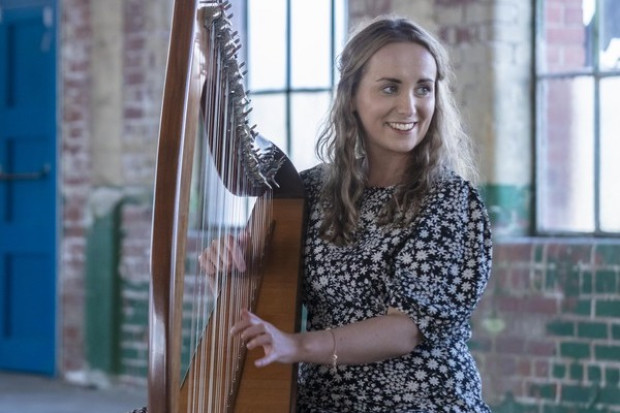
Joana Carneiro
Shades of Drama and Light
Joana Carneiro made her debut with the National Symphony Orchestra on 6 May for a concert of Esa-Pekka Salonen, a Mahler song cycle, and Stravinsky’s Petrushka. It opened with an overture: Salonen’s Helix (2005), a nine-minute accelerando that was performed with precision and drama. This was well chosen to showcase the energetic conducting style for which Carneiro is known. She is a demonstrative, even athletic conductor, but even so, she looked to be working hard to keep the orchestra on the rails, and this manifested in the drive of the work occasionally becoming a meander. These moments never lasted long, though, and the piece ended on a wonderful thunderclap – here and throughout the concert, Carneiro’s fortissimos were full and bold, but never overpowered.
For the next work, Mahler’s early song cycle Lieder eines fahrenden Gesellen, Carneiro was joined by the Irish mezzo-soprano Tara Erraught. This work is a setting of four maudlin poems by a twenty-five-year-old Mahler about an unhappy love he was suffering. There are moments, especially in the ‘Ging heut’ morgen übers Feld’, of lightness, but even in these moments, the lightness is deceptive, or grounded in the narrator forgetting himself entirely. Mahler’s superlative command over melody and orchestration prevents the work from ever dragging, and instead it is a compelling study of shades of young heartbreak.
Erraught brought out all these shades magnificently. Her voice was luxurious and shimmering, while also being at home with the full anger of ‘Ich hab’ein glühend Messer’, but above all its subtlety is what touched me the most: she found and followed musical logics even within single notes, drawing out all the sorrow and forlornness of the music, and bringing lines to a close in a warmly satisfying way. I wondered whether she did not do enough to bring out the ironic undercurrent of the ‘happier’ passages, but I suspect that this was a deliberate decision: after all, the irony is not in Mahler’s orchestration, either. Carneiro supported Erraught with warm lightness, and timbrally, soloist and orchestra blended exquisitely.
The second half of the concert was given to Stravinsky’s 1911 ballet suite Petrushka (in its 1947 revision). This was a fun and interesting choice for two reasons. First, Petrushka sits between Stravinsky’s more famous ballets, The Firebird of 1910, which was Stravinsky’s first major success, and his masterpiece The Rite of Spring of 1913; it is fascinating as a point in the development of Stravinsky’s style, and a superb work in its own right. Second, Petrushka shares its theme with Lieder eines fahrenden Gesellen: the protagonist loves a woman who loves someone else, and then does something like die. But whereas in Mahler’s song cycle this is treated with painful earnestness, in Petrushka it is treated playfully, even comedically – and in any event as less interesting than the music it inspires. I can offer no speculation as to what Carneiro intended by this juxtaposition, but I deeply enjoyed the contrast.
The performance here was again mostly superb, with a great sense of drama. There were, as with Helix, a few rather wooden moments in the middle where the performance lost some momentum, but on the whole it was ebullient and confident.
This was generally an exciting and intelligently programmed concert; the standing ovation it received was well deserved.
For upcoming performances by the National Symphony Orchestra, visit: www.nch.ie.
Published on 10 May 2022
James Camien McGuiggan studied music in Maynooth University and has a PhD in the philosophy of art from the University of Southampton. He is currently an independent scholar.

















